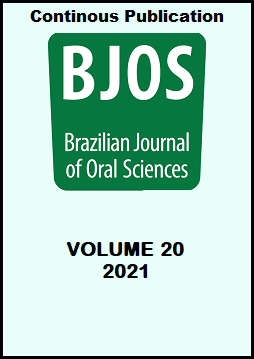Abstract
There is no much published data on the mothers’ false beliefs about signs and symptoms associated with teething in Sudan. Aim: This cross-sectional hospital-based study was conducted to assess mothers` knowledge about infant teething process and to evaluate mothers’ practices used to alleviate teething disturbances in Gadarif city, eastern Sudan. Methods: Questionnaires were used to collect data. Multivariate logistics regression models were performed and adjusted odds ratios (AOR) and 95% confidence intervals (CI) were calculated. Results/Conclusion: Of a total of 384 participating mothers, 126 (32.8%) had good knowledge about infant teething. The mothers’ knowledge was associated with a higher number of children in the family (adjusted odds ratio [AOR] = 1.14) and with having a job (AOR = 2.22). Mothers residing in rural areas (AOR = 0.40) and mothers with lower than secondary education (AOR = 0.43) were less likely to have good knowledge about teething. Diarrhea (88.5%), fever (86.5%), an urge to bite (76.6%), and poor appetite (71.9%) were the signs and symptoms most attributed to teething by mothers. Only the mother’s knowledge about teething was associated with reporting fever as a sign. A considerable number (317; 82.6%) of mothers reported performing “Dokhan” (acacia wood smoke), 313 (81.5%) preferred to administer paracetamol or other systemic analgesics, 262 (68.2%) agreed that a child with tooth eruption should be taken to a hospital or health center, and 216 (56.3%) believed that antibiotics relieved symptoms related to teething.
References
Cunha RF, Pugliesi DM, Garcia LD, Murata SS. Systemic and local teething disturbances: prevalence in a clinic for infants. J Dent Child (Chic). 2004 Jan-Apr;71(1):24-6.
Sahin F, Camurdan AD, Camurdan MO, Olmez A, Oznurhan F, Beyazova U. Factors affecting the timing of teething in healthy Turkish infants: a prospective cohort study. Int J Paediatr Dent. 2008 Jul;18(4):262-6. doi: 10.1111/j.1365-263X.2007.00893.x.
Massignan C, Cardoso M, Porporatti AL, Aydinoz S, Canto Gde L, Mezzomo LA, Bolan M. Signs and symptoms of primary tooth eruption: a meta-analysis. Pediatrics. 2016 Mar;137(3):e20153501. doi: 10.1542/peds.2015-3501.
Tighe M, Roe MF. Does a teething child need serious illness excluding? Arch Dis Child. 2007 Mar;92(3):266-8. doi: 10.1136/adc.2006.110114.
Hatibovic-Kofman S, Ari T. Managing discomfort caused by teething. J Can Dent Assoc. 2013;79:d141.
Elbur AI, Yousif MA, Albarraq AA, Abdallah MA. Parental knowledge and practices on infant teething, Taif, Saudi Arabia. BMC Res Notes. 2015 Nov;8:699. doi: 10.1186/s13104-015-1690-y.
Kumar S, Tadakamadla J, Idris A, Busaily IA, AlIbrahim AY. Knowledge of Teething and Prevalence of Teething Myths in Mothers of Saudi Arabia. J Clin Pediatr Dent. 2016;40(1):44-8. doi: 10.17796/1053-4628-40.1.44.
AwadKamil M. Mothers’ misconception and traditional practises towards infant teething’ symptoms in Khartoum. IOSR J Pharm. 2012 Jan;2(3):448-51. doi: 10.9790/3013-0230448451.
Owais AI, Zawaideh F, Al-Batayneh OB. Challenging parents' myths regarding their children's teething. Int J Dent Hyg. 2010 Feb;8(1):28-34. doi: 10.1111/j.1601-5037.2009.00412.x. Erratum in: Int J Dent Hyg. 2010 Nov;8(4):324. Erratum in: Int J Dent Hyg. 2017 Aug;15(3):258.
Oziegbe EO, Folayan MO, Adekoya-Sofowora CA, Esan TA, Owotade FJ. Teething problems and parental beliefs in Nigeria. J Contemp Dent Pract. 2009 Jul;10(4):75-82. doi: 10.5005/jcdp-10-4-75.
Getaneh A, Derseh F, Abreha M, Yirtaw T. Misconceptions and traditional practices towards infant teething symptoms among mothers in Southwest Ethiopia. BMC Oral Health. 2018 Sep;18(1):159. doi: 10.1186/s12903-018-0619-y.
Kakatkar G, Nagarajappa R, Bhat N, Prasad V, Sharda A, Asawa K. Parental beliefs about children's teething in Udaipur, India: a preliminary study. Braz Oral Res. 2012 Mar-Apr;26(2):151-7. doi: 10.1590/s1806-83242012000200011.
Jones M. Teething in children and the alleviation of symptoms. J Fam Health Care. 2002;12(1):12–3.

This work is licensed under a Creative Commons Attribution 4.0 International License.
Copyright (c) 2021 Brazilian Journal of Oral Sciences


